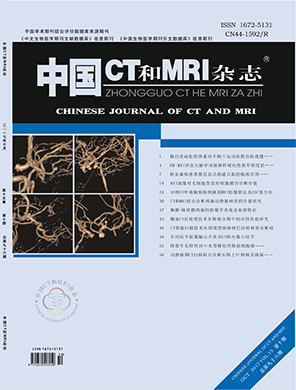Head and Neck Imaging
To Investigate the Clinical Value of CT and MRI in the Diagnosis of Sinoasal and Nasal Inverted Papilloma*
Author:JIANG Xue, FENG Li-Chun, DAI Bao-qing
affiliation:Department of Otolaryngology, Cangzhou Central Hospital, Cangzhou 061000, Hebei Province, China
PDFAbstract
Objective To investigate the clinical value of CT and MRI in the diagnosis of sinoasal and nasal inverted papilloma (SNIP). Methods A retrospective analysis of 100 cases of SNIP confirmed by surgical pathology in our department from June 2012 to November 2015 who had preoperative CT and MRI, and the CT, MRI diagnostic accordance rate were compared with pathological diagnosis. The CT, MRI diagnostic imaging characteristics were analyzed. Results 27 cases of SNIP origins in the maxillary sinus, 22 and 16 cases in ethmoid and frontal sinus respectively, 15 cases in turbinate and 8 in ostiomeatal complex, 7 cases in sphenoid sinus, the origin of 5 cases remains unknown; CT and MRI diagnosis installments in line with the rate of 98.0% was significantly higher than CT or MRI diagnosis rate of 94.0%, 96.0%; CT manifestations: unilateral nasal sinus soft tissue lesions, bone inflammation occurred was 63.0% (63/100), and the site of origin concordance rate 64.6% (42/65), 9 cases of the orbital or skull base bone destruction, and malignant transformation, MRI findings: 97 cases occurred gyrus syndrome, 86 cases to accurately predict the site of origin (86.0% accuracy). Conclusion CT combined with MRI examination can show the full scope and SNIP and soft tissue boundaries contribute to tumor clinical stage and accurate preoperative assessment of tumor origin, and thus more conducive to early diagnosis and early treatment.
【Keyword】CT; Nasal Inverted Papilloma (SNIP); Diagnosis; Value of MRI
【Chart number】R765.2
【Document Identification Number】A
【DOI】10.3969/j.issn.1672- 5131.2017.10.011
Chinese journal of CT and MRI
th15Volume, th 10 Issue
2017Year10Month

Related articles